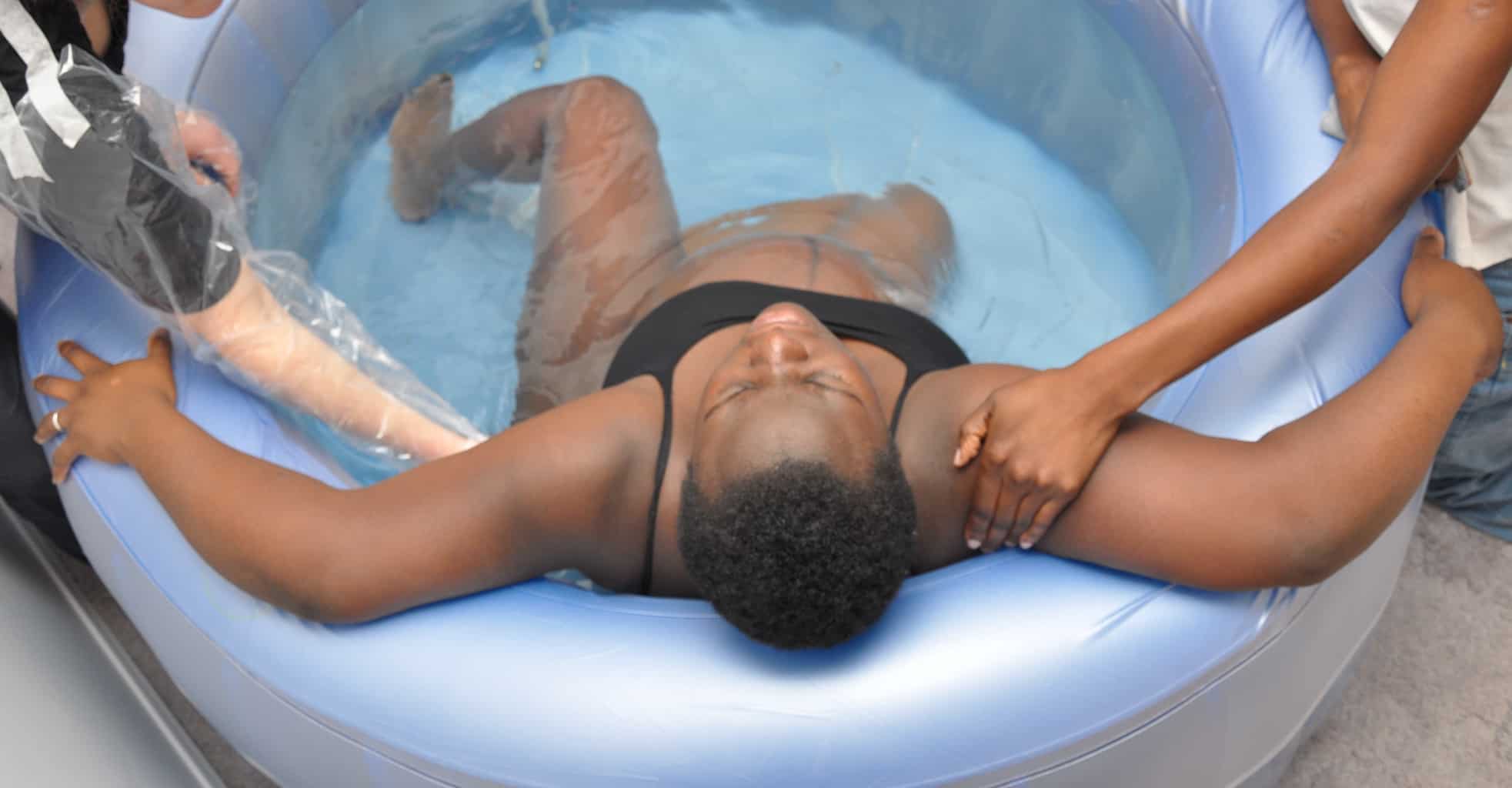
Waterbirth
Waterbirth
What is a waterbirth?
During a waterbirth, the mother gives birth in water in a birthing tub. She may also spend part of her labor in the tub. This special tub is larger and deeper than a regular bathtub, deep enough for water to cover the mother's abdomen. It allows the mother to try a variety of different positions during labor and delivery. The baby emerges into the warm water before being brought out to take a first breath of air.
What are the advantages of a waterbirth?
For mothers, the advantages of a waterbirth may include shorter and more efficient labor.
Immersion in warm water helps you relax and enhances your comfort.
- Reduces the need for pain medication
- Decreased incidence of significant tearing
- Enhanced mobility so you can easily change positions to help your baby descent, and
- Increased sense of independence, power, and autonomy during labor and birth.
Advantages of a waterbirth for your baby
For your baby, the advantages of a waterbirth may include:
- Better blood flow to your baby as a result of your enhanced comfort and circulation
- The warm, wet, and soft environment of the tub is thought to provide a gentle welcome for your baby
Your baby may be calmer, more alert, and cry less after birth.
- Increases your baby’s readiness and ability to breastfeed
Is a waterbirth a viable option for you?
A waterbirth is not a viable option if:
- You have a high-risk pregnancy
- You become light-headed, dizzy, or extremely fatigued
- You have a temperature of 100.4 degrees Fahrenheit
- You are pregnant with more than one baby
- You have had a previous Cesarean birth
- Your baby is in a breech position
- You have a high BMI or a large baby
- Your baby is experiencing distress
- There is meconium in your amniotic fluid
- You’re in premature labor
- Your midwife determines there is a concern for the well-being of you or your baby
FAQs
Using the birthing tub for labor and/or birthing is an option for women with a low-risk pregnancy, where labor is spontaneous.
Before a woman may enter the birthing tub she must have a fetal monitor tracing that shows her baby is doing well. This can take a minimum of 20 minutes.
Once a woman is in active labor and making cervical change she may get into the tub. The first hour to hour and a half offer the best relaxation. It may then be useful to get out and actively move about before reentering the tub again.
During waterbirth, your baby continues to get oxygen through the umbilical cord while under water. An innate "dive reflex" prevents your baby from trying to breathe. He or she is gently brought out of the water within a second or two after the birth and into your arms. After being brought out of the water, the baby takes a first breath of air.
Considering a waterbirth?
When choosing a waterbirth, it is important to discuss your decision with your provider and meet the criteria listed above. It is important to talk with your midwife about this option early in your pregnancy.

